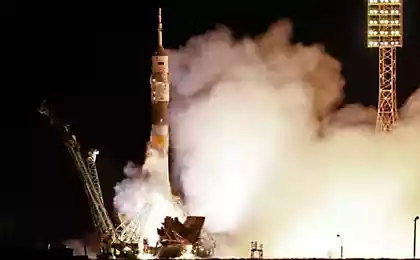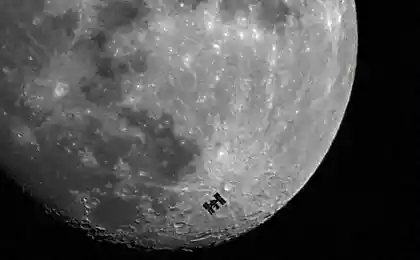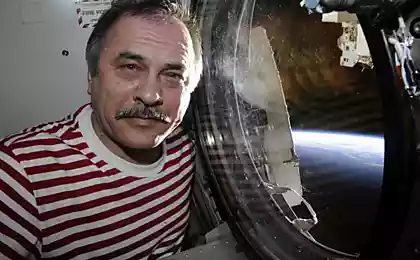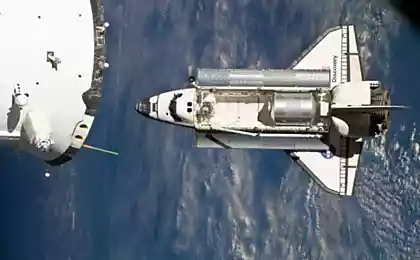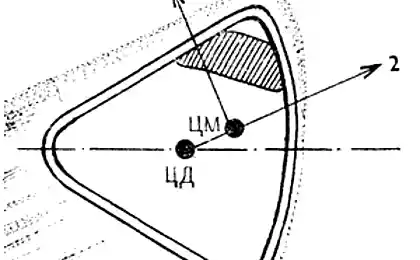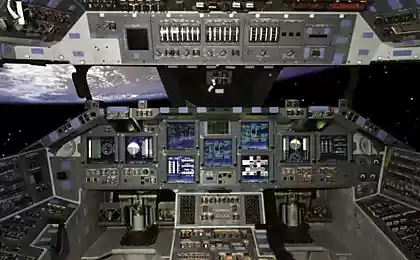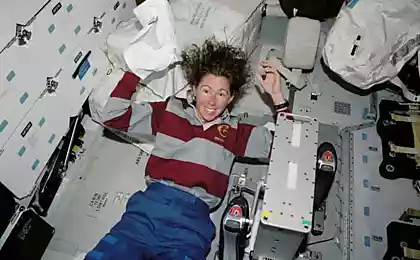245
What do you eat in space? Unexpected facts about space cuisine
History of space nutrition, features of cooking for weightlessness and the ISS menu. Funny details like "banned" products.

Why is space cuisine so important?
Nutrition in space is a topic that has long been overshadowed by more high-profile research on rocketry or planetary exploration. However, when it comes to long-duration missions, it’s food that largely determines how comfortable astronauts will be able to live and work beyond Earth. According to NASA, a well-designed diet increases efficiency and reduces the risk of health problems during flight. Moreover, in zero gravity, any habitual actions - from cutting foods to a normal meal - become a real test.
In this article, we will understand how the “space kitchen” works, what foods can not be taken on board, and why drinks in space are a separate “headache” for engineers. At the end, you will find a short infographic (in text), which will help to visualize all the most interesting things about nutrition on the International Space Station (ISS).
The history of space nutrition: from tubes to sublimates
The first astronauts could not boast of a variety of menus. When Yuri Gagarin set off on his historic flight, his “kitchen” consisted of small tubes of condensed milk and mashed meat. Similarly, the American astronauts of the Mercury program also used tubes with mashed mixtures. This was necessary so that the food did not “fly away” in zero gravity and did not spoil during storage.
However, the Apollo program began to actively develop technology. sublimation (freeze-drying), which allowed to remove water from the products, while preserving their taste and nutritional qualities. It was enough to add a little hot water, and — voila — the astronauts received a kind of “home lunch” in orbit.
Later came more convenient and tasty options: dried fruits, nuts, individual dry dishes. There's even dessert! But it is difficult to call them “full”, because there were a lot of restrictions. In addition, the early years of the space race were a time of experimentation, when scientists tried to understand how weightlessness affects digestion and taste.
ISS Menu: What do astronauts eat today?
On the International Space Station, the diet has become much more diverse. Astronauts have several hundred dishes available, from which they can compile their “food diary” for several months ahead. The menu includes:
"Forbidden" products and curious cases
If you collect a list of all the taboos in space, it will be quite extensive. But especially worth mentioning:
How do you drink in space?
In zero gravity, the liquid forms "balls" and does not flow down. Therefore, “ordinary” glasses are useless there. Usually, drinks are stored in plastic bags with straws and valves to minimize the risk of spillage. Astronauts can drink water, juice, tea, or coffee, but all in a sealed container. Often, the liquid is delivered in dehydrated (dry) form, and at the right moment it is diluted with water in the onboard "dispenser".

Food and Safety: Why is it critical?
In space, the body is subjected to many loads: from radiation to the absence of the usual gravity. Food should provide the crew with all the necessary vitamins and minerals, as well as compensate for possible bone loss (now astronauts take special calcium, vitamin D and other supplements). In addition, microbiological safety is extremely important: any food poisoning in a confined space can have serious consequences.
Engineers and nutritionists collaborate to create smart-packageIt not only preserves the freshness of products, but also tells you how much stock is left and when they expire. The latest research involves using 3D-printed food to diversify menus and make the most of limited resources.
Infographic (text version)

The Future of Space Kitchen
As space exploration advances and plans for long-term missions (such as missions to the Moon and Mars), space nutrition is becoming more innovative. Already, scientists are thinking about growing plants in orbit and creating closed biospheres, so as not to depend only on supplies from the Earth. In this sense, “space kitchen” is not only about the current rations and tubes, but also about the future of the entire food industry. The technologies developed for the ISS may enter our daily lives in the future: sublimation allows you to store food longer, and new packaging – better manage resources.
Thus, the menu in zero gravity has ceased to be a boring set of canned food. Astronauts can eat comfortably, enjoy a variety of dishes and even bring a piece of "home comfort" into space. And although bread is still “outlawed”, the very idea of an orbital dinner sounds more real and appetizing every year.

Why is space cuisine so important?
Nutrition in space is a topic that has long been overshadowed by more high-profile research on rocketry or planetary exploration. However, when it comes to long-duration missions, it’s food that largely determines how comfortable astronauts will be able to live and work beyond Earth. According to NASA, a well-designed diet increases efficiency and reduces the risk of health problems during flight. Moreover, in zero gravity, any habitual actions - from cutting foods to a normal meal - become a real test.
In this article, we will understand how the “space kitchen” works, what foods can not be taken on board, and why drinks in space are a separate “headache” for engineers. At the end, you will find a short infographic (in text), which will help to visualize all the most interesting things about nutrition on the International Space Station (ISS).
The history of space nutrition: from tubes to sublimates
The first astronauts could not boast of a variety of menus. When Yuri Gagarin set off on his historic flight, his “kitchen” consisted of small tubes of condensed milk and mashed meat. Similarly, the American astronauts of the Mercury program also used tubes with mashed mixtures. This was necessary so that the food did not “fly away” in zero gravity and did not spoil during storage.
However, the Apollo program began to actively develop technology. sublimation (freeze-drying), which allowed to remove water from the products, while preserving their taste and nutritional qualities. It was enough to add a little hot water, and — voila — the astronauts received a kind of “home lunch” in orbit.
Later came more convenient and tasty options: dried fruits, nuts, individual dry dishes. There's even dessert! But it is difficult to call them “full”, because there were a lot of restrictions. In addition, the early years of the space race were a time of experimentation, when scientists tried to understand how weightlessness affects digestion and taste.
ISS Menu: What do astronauts eat today?
On the International Space Station, the diet has become much more diverse. Astronauts have several hundred dishes available, from which they can compile their “food diary” for several months ahead. The menu includes:
- Dehydrated dishes (sublimated): soups, vegetable stews, meat.
- Thermostabilized products: canned, pate, juices in soft bags.
- Fresh fruits and vegetables (limited stocks): usually delivered by transport ships, but stored for a short time.
- Special "national" dishes: Each crew can bring in a bit of "home cooking" agreed with dietitians to boost morale.
"Forbidden" products and curious cases
If you collect a list of all the taboos in space, it will be quite extensive. But especially worth mentioning:
- Bread and crumbs. Ordinary bread (and especially bakery products) in zero gravity "split" into small pieces that can damage electronics or get into the lungs.
- Carbonated drinks. In the absence of gravity, the gas does not rise up, but mixes with the liquid, which can cause severe discomfort. In addition, the bubbles simply “clunge” to the walls of the esophagus.
- Salt and pepper in crumbly form. The same as breadcrumbs, but even more dangerous: tiny particles of salt can get into the eyes or nose, causing irritation.
How do you drink in space?
In zero gravity, the liquid forms "balls" and does not flow down. Therefore, “ordinary” glasses are useless there. Usually, drinks are stored in plastic bags with straws and valves to minimize the risk of spillage. Astronauts can drink water, juice, tea, or coffee, but all in a sealed container. Often, the liquid is delivered in dehydrated (dry) form, and at the right moment it is diluted with water in the onboard "dispenser".

Food and Safety: Why is it critical?
In space, the body is subjected to many loads: from radiation to the absence of the usual gravity. Food should provide the crew with all the necessary vitamins and minerals, as well as compensate for possible bone loss (now astronauts take special calcium, vitamin D and other supplements). In addition, microbiological safety is extremely important: any food poisoning in a confined space can have serious consequences.
Engineers and nutritionists collaborate to create smart-packageIt not only preserves the freshness of products, but also tells you how much stock is left and when they expire. The latest research involves using 3D-printed food to diversify menus and make the most of limited resources.
Infographic (text version)
- 1. On average, an astronaut consumes about 3,000 calories per day.
- 2. The main formats of food: dehydrated, thermally stabilized, fresh products (a small percentage).
- 3. Prohibited: bread with crumbs, soda, spices in crumbly form.
- 4. Favorite dishes: pasta with sauce, fruits, fish, chicken in teriyaki sauce.
- 5. How much water do you need? Approximately 1.8 liters of drinking water per person per day, plus water for food rehydration.

The Future of Space Kitchen
As space exploration advances and plans for long-term missions (such as missions to the Moon and Mars), space nutrition is becoming more innovative. Already, scientists are thinking about growing plants in orbit and creating closed biospheres, so as not to depend only on supplies from the Earth. In this sense, “space kitchen” is not only about the current rations and tubes, but also about the future of the entire food industry. The technologies developed for the ISS may enter our daily lives in the future: sublimation allows you to store food longer, and new packaging – better manage resources.
Thus, the menu in zero gravity has ceased to be a boring set of canned food. Astronauts can eat comfortably, enjoy a variety of dishes and even bring a piece of "home comfort" into space. And although bread is still “outlawed”, the very idea of an orbital dinner sounds more real and appetizing every year.
From Cubism to AI Art: How Technology is Changing Visual Culture
The amazing world of mushrooms: hidden forces under the hat



